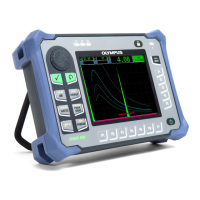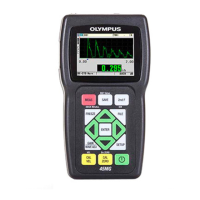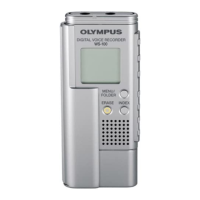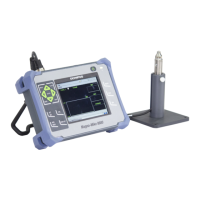DMTA-10055-01EN, Rev. A, February 2015
Glossary
323
Damping material Any epoxy or other high attenuation material used in the
transducer to shorten the ringing time of the piezoelectric
element.
Decibel (dB) A unit which compares levels of power, commonly used to
express relative sound intensities in ultrasonic testing.
Two amplitude levels V1 and V2, expressed as either
voltages or screen percentages, are said to differ by n
decibels where:
dB = 20 log (V2 / V1)
Delay control Software function that introduces an adjustable time
period between the excitation pulse and the start of the
sweep across the data display.
Detectability The ability of a test system (instrument and transducer) to
detect or “see” a given size reflector.
Distance amplitude
correction (DAC)
A method of flaw sizing that plots an on-screen curve
representing the echo amplitude from a known size
reflector at varying distances from the transducer. This
curve compensates for the loss of energy due to beam
spreading and attenuation.
Distance Gain Sizing
(DGS)
A sizing technique that mathematically relates the
amplitude of the echo from a reflector to that of a flat
bottom hold at the same depth or distance. The generated
curves are derived from the calculated beam spreading
pattern of a given transducer, based on its frequency and
element diameter, and adjusted for material attenuation.
Dual element probe A transduced containing two piezoelectric elements, one
which transmits and one which receives.
Dynamic range The range of gain or signal amplitude that can be
displayed on a given instrument.
Table 32 Glossary (continued)
Term Definition

